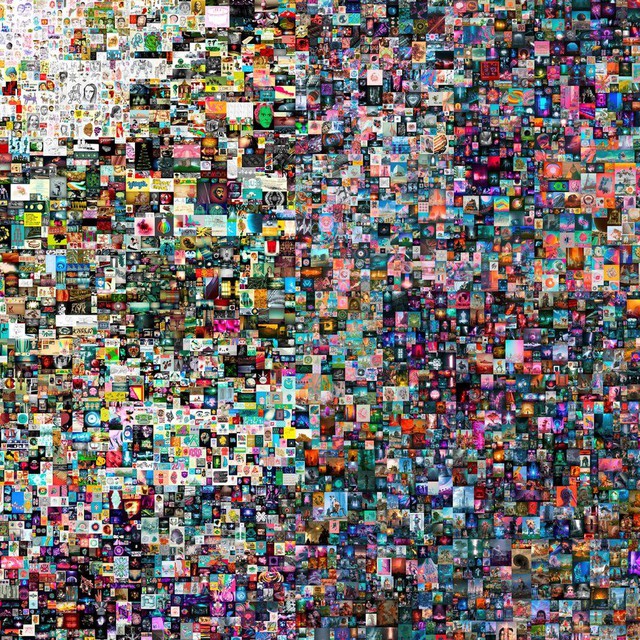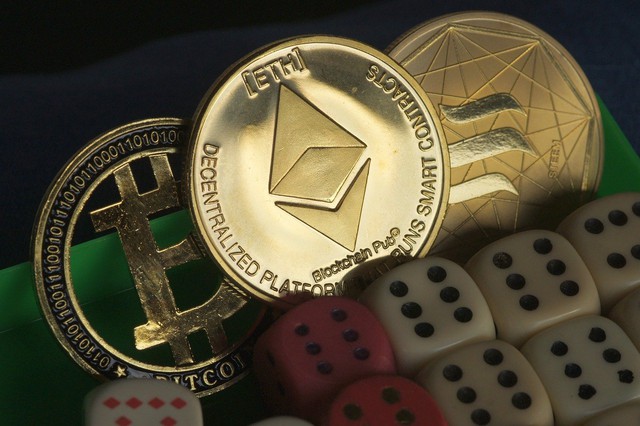Experts say: Why the NFT market will crash
- Tram Ho
Last March, a JPG file created by artist Beeple sold at auction house Christie’s for $69.3 million, a record amount for a digital work. This money is in exchange for ownership of the original JPEG file – titled “Everydays – The First 5,000 Days” – when it is secured by NFT.
This deal created a boom for the NFT market. Investors poured $27 billion into the market last year, and Meta firm (Facebook changed its name) also announced plans to allow users to create and sell NFT files.

But according to two economists, strategy professor Patrick Reinmoeller and finance professor Karl Schmedders of the Institute for Management Development in Lausanne, Switzerland, the NFT market is riddled with problems that could eventually do it. crash, which has nothing to do with the environment.
The NFT Market Is Like The Tulip Crazy Of The 17th Century
Essentially, an NFT is a tradable piece of code that is attached to a data file, such as an image. A secure network of computers records transactions with the NFT file into a digital ledger – or blockchain, giving buyers proof of authenticity and ownership of the data file.
Typically, NFTs are paid for in ETH and stored on the Ethereum blockchain. By combining a desire to own art with state-of-the-art technology, NFTs are the perfect assets for Silicon Valley’s emerging rich and the financial investment community.
But like other markets driven by the glitz, the impulsive, over-praised and speculative trades of the NFT market can burn many investors. These frenzied solicitations are comparable to the Dutch tulip mania of 1634-1637, when a few flowers were pushed to sky-high prices before the bubbles deflated and burst.

Besides that, many people also criticize the NFT market for another reason – environmental concerns. Just like cryptocurrencies, consuming NFTs consumes a significant amount of energy and entails carbon emissions issues.
But the real problem with the NFT craze is that it’s like a castle built on sand.
NFT – an asset with an almost endless supply
The first is the almost endless supply of NFTs. NFT gives ownership of digital assets to buyers, but does not prevent others from using copies of it. Part of the reason the rich are spending tens of millions of dollars or more to own traditional works of art like paintings by Rembrandt, Van Gogh or Monet is because the number of these masterpieces is limited.
Furthermore, like all digital goods, there is no visual difference between a $69 million NFT-tagged original JPG file and a free downloadable copy. In theory, the supply of legally usable copies of NFT files is endless, possibly exceeding demand and causing its price to crash.

That’s because despite its high security, the blockchain cannot store real digital assets, instead, when a person buys an NFT file, they just buy a link to the digital artwork. – not the work itself.
Even if the buyer owns the copyright to that link, the transaction costs involved in monitoring the multitude of online venues for NFT display, identifying illegal use, and prosecuting violations make the practice more difficult. Copyright enforcement and preventing infringement are nearly impossible. This drastically limits the ability to monetize NFT assets.
The ability to make native copies of digital files makes it difficult for NFTs to become a luxury item. For people with a lot of money, owning luxury items is also a way to show their wealth, but owning an NFT property does not prevent others from displaying the same asset, making the power of ownership. ownership as well as spending power for single assets becomes less strong.
Risks from nascent technology and macroeconomics
Another risk with NFTs is that they are created and sold using nascent technologies – blockchain technology and cryptocurrencies. There are many competing standards for how NFTs are created, protected, distributed, and certified. This makes certification of title uncertain and can jeopardize the value of the property and title.
Besides, the value of NFT may evaporate as the next generation of technology can surpass blockchain or cryptocurrency but is not compatible with the protection of NFT ownership. In addition, because they are built on top of cryptocurrencies – whose prices fluctuate frequently – the value of NFTs becomes even more unpredictable.

Macroeconomic conditions are a big factor when it comes to the prices of alternative assets like the NFT or traditional artwork. Over the past 20 years or so, the number of global billionaires has increased fivefold, which has led to a massive increase in the amount of money flowing into alternative assets like NFTs and artwork.
The Covid-19 pandemic has further reinforced this trend. A series of countries around the world have injected money into financial markets as part of economic stimulus policies, increasing the net worth of the super-rich.
But history can repeat itself as investors’ attention is often fleeting. After the 2008 financial crisis, art sales dropped by 40%. As central banks are starting to tighten monetary policy to rein in inflation, emerging asset classes like the NFT could be hit harder than other more reliable assets.
With an often volatile and crypto-based NFT market, there is no guarantee they can be a safe-haven from this change in macroeconomics. These will eventually cause the NFT price to drop heavily and possibly permanently. That may not happen tomorrow or next month, but the fall will come.
Refer to SCMP
Source : Genk
